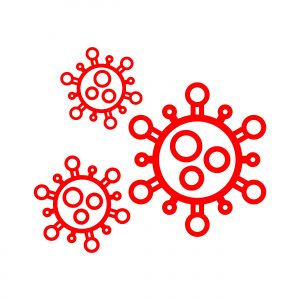
When the novel coronavirus reared its ugly roundish head and COVID-19 turned into a global monster of apocalyptic proportions, questions, theories, and questionable theories sprouted almost as quickly and prolifically as the virus. Research Psychologist Leonie Vorster reflects on the multi-dimensional nature of coercion, particularly the addition of state coercion to the existing lethal mix of health, social and economic conditions in South Africa and what led to several predictable but also some unforeseen consequences.
Conjecture and Evidence
Did you know that Bill Gates orchestrated the pandemic, and the virus was itself a hoax? That an ethereal world order, including the World Health Organisation (WHO), was forcing people to wear masks and get tested for COVID-19 during the first wave of the pandemic, to assess how far they could push compliance? That the second wave of the pandemic will reveal the real agenda behind the creation of the pandemic, namely, requiring vaccination against the coronavirus so that ‘they’ can implant microchips in everyone, putting ‘them’ in control?
There were some South African, more low-tech versions and variations of this theory, mainly about the Minister of Cooperative Governance and Traditional Affairs, Nkosazana Dlamini-Zuma and the allegedly corrupt (Jacob Zuma linked) camp within the African National Congress (ANC).
Apparently, the ruling party could not believe their luck when the WHO declared the pandemic, so that they could take legitimate control of the South African government by declaring a National State of Disaster, without the majority support that they failed to achieve at the last ANC conference. In this scenario, the lockdown regulations were said to be a means to strip South Africans of their rights and freedoms, so that Nkosazana Dlamini-Zuma and her cronies could either take total control, if the measures taken proved effective and the citizens complied, or declare a National State of Emergency, the likes of which we have not seen since the Apartheid era, if the citizens revolted against the measures taken?
Or maybe you have read somewhere that Nkosazana Dlamini-Zuma and the regulations were aimed at enriching the ANC cadres? For example, by creating opportunities to award tenders for pandemic-related products and services at inflated prices, to organisations with no track record of offering such products or services.

There were also several versions of the theory that the Zuma family, Julius Malema of the Economic Freedom Fighters (EFF) and/or others are deriving financial benefit from the banning of tobacco product sales in South Africa, because of their documented and alleged links with the illicit cigarette trade in South Africa and between South Africa and its neighbours. In a related theory, the regulations were said to be targeting the foreign multi-national organisations and so-called White Capital in particular, to dismantle the current economic system and replace it with a socialist or communist economic regime.
You would have seen some or all of these theories and opinions, and many others (AfricaCheck, 2020), on social media and in the news. If you don’t recognise any of these, you have not been reading or watching the news, you are almost certainly not using social media, or something must have gone wrong with the algorithm running your social media feed.
I recently had a short-lived conversation with an old friend who was convinced of certain questionable versions of “the truth about the pandemic”. He refused to wear a mask, or to be tested for COVID-19, and will refuse to be vaccinated if or when the time comes. His main objection to the management of the pandemic and the related regulations seemed to be that he did not accept being controlled or being told how to look after his own health.
The conversation highlighted that cynical, erroneous conspiracy theory beliefs could pose a serious challenge for public health. But the conversation also raised other questions for me. First, in a novel situation like the current pandemic, how does one separate the fast-emerging but ever-changing theories and research from erroneous conspiracy theories and beliefs, both published via the large number of available channels? Truthful, responsible reporting that is well-researched and objective, from fearmongering, divisive innuendo that makes economical use of confirmed facts but sounds convincing, or even logical? The answer lies with:
- knowing the source of the content that you are reading or watching, and
- distinguishing (untested) hypotheses, theories and opinions from scientific proof and evidence-based research.
After the WHO declaration, I was reading as much as possible about the health and social science and the economy and management of the pandemic. I interrogated the credibility of sources and the rigour of the content presented. Where did the content originate, and which sources were trustworthy? Who was saying or doing what, and what were their agendas? How accurate and useful was the published content about the pandemic?
The propensity for (ab)using the pandemic for political, commercial and editorial ends was everywhere. It was not long before much of the content about the pandemic was confusing, contradictory, sensational, irrational, unbalanced or absurdly meaningless. In some instances, the content was grossly inaccurate, or downright fake and unethical, if not illegal.
Conspiracy theories were and remain rife. A conspiracy theory is a set of erroneous beliefs that suggest that an event is the result of an (usually evil) plot by an entity to achieve a goal for selfish reasons (Swami, Voracek, Stieger, Tran, & Furnham, 2014). Georgioua, Delfabbroa and Balzan (2020) describe an effective conspiracy theory as one that piques interest while at the same time being based on untrue premises that are so vague that the theory cannot be disproved.
People who are paranoid, struggle to separate fabricated from credible information, feel powerless or mistreated and/or make connections where there are none when explaining events, were found to be more likely to believe conspiracy theories. Those who believe conspiracy theories usually obsess about event details and are unlikely to analyse the logic of their own beliefs, or that of the conspiracy theories, systematically and critically. Their analysis could also be logically flawed if they make use of so-called conspiratorial reasoning styles (Georgioua, Delfabbroa and Balzan, 2020).
A six-step recipe for creating a conspiracy theory emerged from information available on the subject. If you start at Step 6 and work your way back, it is also a recipe for deconstructing conspiracy theories.

- Think of a well-known entity (e.g. an individual, group of people, or organisation).
- Add a dollop of (real or imagined) benevolence to the character of the entity.
- Think of an evil plan that the entity could hatch, that will achieve a goal for only the entity’s benefit and proclaim that the entity has indeed hatched this plan.
- Add an audience with generalised distrust because of one or more life experiences of abuse, being disadvantaged or being treated unfairly.
- Sprinkle the mixture with the belief that most people are victims of injustice, except those who are part of some form of elite.
- Optional: Bake the mix in the oven of an actual current event (e.g. a pandemic), or plausible future event.
Going to War Against COVID-19
South Africans were staring into an epidemic precipice, trying to catch their collective breath and uttering a silent prayer for the power to fly. They reached behind them to grab armour for the fight against COVID-19. Every resource had to be marshalled for this fight: information and communication, sciences and statistics, health and social services, employment and business, housing and infrastructure, law and order, education and training, treasury and procurement.
National pride was at stake and unity was imperative. However, more than two and a half decades into South African democracy, the chickens had come home to roost. The legacies of Colonialism and Apartheid are most tangible in the prevalence of persistent racism, gender-based and other forms of violence, and institutionalised socio-economic inequality. The wounds have not healed, and the damage has not been repaired, despite many herculean and good-intentioned individual and group efforts.
The people of South Africa were facing the epidemic with antiquated, dented armour and makeshift, broken weapons. The majority of South Africans were already poor, vulnerable, hungry and feeling powerless, with limited access to employment, education or healthcare. South Africa was certainly not the picture of health before the novel coronavirus came to our shores. We were living in a comorbidity disaster area.
- Tuberculosis, Diabetes Mellitus, Cerebrovascular and other forms of heart disease, Human Immunodeficiency Virus [HIV] disease and Hypertensive diseases were at the top of the list of causes of death, in descending order (Statistics South Africa, 2020).
- South Africans have been consuming alcohol at an average annual rate per capita of more than 7 litres pure alcohol (WHO, 2019), or almost 29 litres per capita (BusinessTech, 2019) when non-drinkers are taken out of the equation, which ranks fifth highest globally. More than 94,000 cases of driving under the influence of alcohol and/or drugs were detected by police last year (SAPS, 2020).
- Roughly a fifth of the adult population were using tobacco products before and during the pandemic (WHO, 2019, REEP, 2020).
Crime, especially gender-based violence, was and is at perilous levels, with about 4,700 sexual offences (SAPS, 2020) probably going unreported during lockdown thus far.
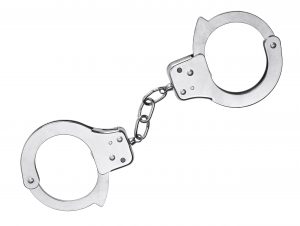
By the time the South African version of lockdown kicked in, I had expended so much energy wading through information that I had all but depleted my energy reserves. Such fruitless expenditure should be a crime, and it was time for me to consider implementing my own version of load shedding, Stage 8, to replenish my reserves and get rid of the negative energy all around.
Replacing my information junkie fix proved to be no easy feat. I thought of joining a protest, to channel the negative energy into tangible action for the greater good. The local and global protest calendar was crammed, but in the end, I did not have enough energy to choose a protest, let alone join in. Besides, many of the protests turned violent, as one would reasonably expect when law enforcement agencies come armed with strict orders, rubber bullets, batons, water cannons and stun grenades, and protesters come armed with handmade placards, teeming frustration and justified anger, burning buildings and stoning vehicles, risking life and limb to take to the streets during a pandemic.
An air of warfare was introduced in South Africa’s response to the pandemic from the get-go. Perhaps that is why it took a week or two for many South Africans to realise the difference between a State of Emergency and a State of Disaster. By then, the National Coronavirus Command Council (NCCC) was up and running, drafting lockdown regulations to give force to the Disaster Management Act.
The South African Police Service and the South Africa Defence Force were instructed from the very top to actively, even fervently, enforce the State of Disaster regulations. The first set of regulations was met with an outcry for more clarity when the list of essential products had some glaring omissions, like nappies. The second set of regulations was met with an equally loud outcry against their specificity or the seemingly arbitrary suspension of the sale of certain items, such as summer clothing.
As it turns out, South Africa’s leaders did not have much in the way of an effective war strategy, or a clear, effective communication plan for the pandemic. Plagued by corruption, it seemed the war was lost before the first battle had begun.
Coercion: The Good, The Bad and The Ugly
Coercion refers to forcing someone to be compliant, obedient and cooperative, in order to induce a specific response from the person being coerced.
Law enforcement in a democratic country is an important form of coercion that protects lives and property from external harm. It impacts on human behaviour in the form of direct force to keep law and order or punishment of those who break the law. Such coercion by the state is generally accepted as justified and proper, to protect constitutional rights, prevent violence and lawlessness, and to punish those found guilty of transgressing. All of this is necessary to ensure cooperation and peace, and positively affect the state’s legitimacy and sovereignty in the country it governs (Anderson, 2017).

So far so good. Most of us would probably accept a version of coercion that promotes the desired outcome of personal safety, for example, using coercive means that result in a paedophile being jailed.
The coerced is required to do something (or not do something) that they are unwilling to do (or not do). Examples of state coercion during the COVID-19 pandemic in South Africa include requiring masks in public, curfews, the prohibition of the sale of tobacco products and alcohol, and the temporary closure of a number of other economic sectors and industries.
A response that the coerced did not want, was required for an outcome that the coercer desired. For example, the state argued that alcohol-related accidents and injuries must be decreased so that the healthcare system is not put under additional pressure. Industry and consumers did not agree, arguing that alcohol can be produced, distributed, sold and consumed responsibly.
Coercers use force, or sometimes leverage, to necessitate the coerced to do as the coercers wish. This can mean direct force to one’s person or property, or the threat of force to one’s person or property that impairs or disables one’s free will. Force can be physical, psychological, financial, sexual and/or reproductive, and can include pain, injury, harm, promises, incentives, deprivation, limitations, and/or punishment.
Recent research also emphasised that the removal of resources, or neglecting to provide the resources that are needed to generate the responses required to obtain reinforcement or to comply, as well as choice architecture systems that are not transparent to the individuals being influenced and for which their consent has not been provided, are also coercive (Goltz, 2020).
The coerced cannot do (or abstain from doing) the contrary of what they are forced to do (or not do). The rightness of coercion gets a bit murkier here but is probably still not inherently a bad idea to prevent the contrary action if the coerced’s free will is objectively undesirable, as in the paedophile example.
Coercion is not theoretically necessary for law enforcement or meeting legal obligations, but coercive enforcement is necessary especially for increasing compliance, that is, law must be coercively enforced. In addition, trade-offs between the liberty of one person and the liberty of another must be made (Raponi, 2015).
Although state coercion in the form of law enforcement is necessary, liberty must come first in a democracy. That means offering the biggest possible range of choices, and letting people decide what is best for themselves. The alternative is “enforced state-sponsored visions of how people should live their lives” and an argument can be made that this is the trademark of Communist and Fascist (militarised) coercion (Glaeser, 2007) and totalitarianism (Kriesberg, 1988). In a democracy – and probably all other forms of government – there are primarily three conditions under which coercion becomes destructive, harmful and dangerous (Glaeser, 2007). Legal and civil actions against the South African government related to its response to the pandemic have asserted that various combinations of these three conditions existed or still exist. The three conditions are that:
- Protected rights are infringed: the coercer is pursuing an outcome that is contrary to or infringes on the legitimate rights of the coerced, which refers to the constitutionally protected rights of the coerced as the minimum standard in a democracy.
- Evil outcomes are pursued: the desired outcome that the coercer is pursuing is itself illegitimate, for example illegal, illicit, dishonest, or criminal outcomes.
- Authority is not legitimate: the coercer is not legally and/or politically authorised, for example, a government that is not democratically elected, or a coercer who acts without the required mandate.

Some of the arguments put forward by various parties on the grounds of the first condition have included that the rights of trade, occupation and profession, human dignity, and freedom and security were infringed on by, for example, the suspension of the sale of tobacco products and alcohol.
Arguments that the second condition has occurred focus on allegations that the outcomes being pursued are actually nefarious. For example, the suspension of the sale of tobacco products was not to protect the national health system, as claimed, but was instead aimed at damaging the legal and aiding the illicit cigarette trade.
A number of arguments have also been made to allege the existence of the third condition, for example, that the authority of the NCCC is illegitimate under the Disaster Management Act, or the Act itself is not legal. The questioning of legitimacy of authority can go beyond the realm of legal and political mandate when an individual’s authority is questioned and disrespected for other reasons, such as sexism or racism.
The legal arguments have been and are being heard by the courts. Some judgements are on appeal and some cases are heading to a higher court. With the prohibition on the sale of tobacco products and alcohol now lifted at lockdown level 2, it remains to be seen whether the actions will be continued as a matter of legal principle.
Coercion in the Eye of the Beholder
There are more subtle forms of coercion, not captured in legal regulations. Top of mind is the threat of loss of income that coerces the only employed person in a household of five people to return to an unsafe workplace and to risk taking an unsafe mode of transport to work. Or poor public health education that leads to the stigmatisation of those infected with COVID-19, effectively coercing them to hide their health status and to refuse to make use of quarantine facilities or self-isolate at home, unless the severity of their symptoms required it.
The legal conditions for improper coercion play out amongst Joe Public at a much more visceral level. The general public’s reaction gets its impetus from whether or not the outcomes put forward by government to justify their coercive actions are perceived to be credible.

There have been a number of pivotal moments that cast doubt on the credibility of the outcomes that the various regulations aimed to achieve. One such moment was arguably when the sale of alcohol was prohibited, then allowed, then prohibited again, and now allowed again.
The suspension of tobacco product sales was another example. It was announced shortly before lockdown. Many of the eight million or so smokers in South Africa were caught off guard and found themselves without any prospect of obtaining their nicotine fix once they ran out of the stock they had on hand. After three weeks, the President announced that the suspension of tobacco product sales would be lifted in the following week. Smokers – and presumably their loved ones, who also had to deal with the effects of withdrawal in close quarters during lockdown – sighed a collective sigh of relief. When the regulations for Level 4 were published a week later, this had changed, and the suspension remained in force.
By applying Transactional Analysis (TA) theory, one could postulate that a parent-to-child interaction approach between a government and its citizens was employed for state coercion, rather than an adult-to-adult approach.
TA theory describes three ways in which people show up when they interact with each other, namely, in a parent, adult or child state of interacting with others (Morad, 2018).
- Someone in the Parent State employs either a positive approach that shows care, love, support and encouragement (i.e. that of a nurturing parent) or a negative approach that blames, criticises, reprimands, punishes and tries to prove a point (i.e. that of a critical parent).
- Someone in the Adult State uses their ability to think and act based on events in the here and now without being emotionally triggered, so that they are analytical, compassionate, curious, empathic, and so on. Some theorists include the nurturing parent state and the natural child state here.
- In the Child State, positive approaches show curiosity, creativity, openness, and love (i.e. the natural child state), but in the negative form show guilt, fear, depression, anxiety, envy, pride and trying to please others (i.e. the adapted child state).
After the conversation with my conspiracy theory friend, I was privately wondering what the point of such conversations was, when one engages with others about the more emotive, philosophical issues facing us. Some people speak and argue with such passion and conviction, irrespective of their level of personal experience or knowledge about the issue at hand. With no real intention to listen to or hear each other, there really isn’t much point in having the discussion, is there? Besides, a blind unwillingness to interrogate and reconsider one’s own beliefs makes for tedious conversation.
In any interaction, each party shows up in one of these conditions, and expects the other party to also show up in and respond from the perspective of one of these conditions. However, this expectation may or may not realise. As the lockdown unfolded, escalating conflict between government and South Africans, within the government structures and amongst South Africans, resulted from what is referred to as crossed transactions: when the expected interaction does not realise, from the perspective of either side.
Successful interactions require complementary transactions. In other words, both parties get what they expect. For example, a grownup who is ill might be in a child state and expect a partner to be in a caring parent state. If the partner was also expecting to and takes on a caring parent role, it works. Both parties feel good, neither are overwhelmed with emotions, there are no emotional outbursts or hurt feelings, and the ill person feels loved, seen and understood.
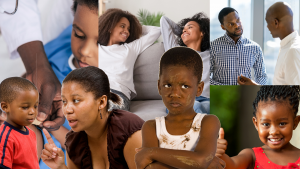
When the government prohibited the sale of tobacco products, they were in effect criticising and punishing those who smoke. The government’s approach, in both content and application, as far as the prohibition was concerned, was that of a critical parent telling an adapted, or naughty, child what (not) to do.
If government took a nurturing parent stance and expected that they would be met by a natural child stance, and South Africans reacted from a natural child stance to the government, accepting the government’s nurturing parent stance, all would be well.
Unfortunately, the lockdown regulations came from a critical parent and triggered an adapted child stance in some quarters (e.g. fear, depression, anxiety) and a critical parent stance in others (e.g. blame, criticism, trying to prove a point).
I would venture a guess that most people were probably approaching government in rational adult or natural child stance at first, expecting either a rational adult or caring parent stance in response. When the interaction took on the form of critical parent to adapted child, it was not surprising that angry parents and vulnerable (or sulking) children stances emerged amongst South Africans.
The few who responded with an adult stance, seeking information and rational justifications for the suspension of tobacco product sales, and some would argue, protected rights, were for the most part also met with the “because I said so” critical parent stance.
President Ramaphosa looked like he was trying to project a nurturing parent stance, and it looked like he was assuming that he was interacting with a natural child. However, Nkosazana Dlamini-Zuma, Health Minister Zweli Mkhize and most of the other Ministers appeared to have adopted a critical parent stance directed at an adapted child, or perhaps expecting an adult stance from the majority of citizens.
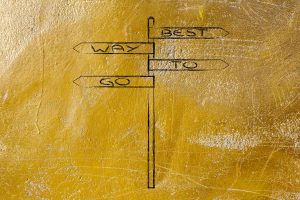
This brings me to a second psychological concept, namely, inconsistent parenting. When parents are consistent in their day-to-day approach to parenting, that is, how they connect emotionally with their child, deliberately choosing how to engage with or respond to the child, and not varying that over time, the child learns what to expect, and to predict how the parents will react to specific situations. This creates a feeling of safety and security.
Children understand the world through consistency, and it helps them to make better choices. The structure and routine of consistency defines boundaries, so that children can organise and integrate information and understand how the world works (Ceder, 2020).
On the other hand, inconsistent parenting is confusing and teaches a child that adult responses are unpredictable. This can lead either to aggression, delinquency, conduct problems and hostility, or to complacency and passivity, and almost always produces anxiety.
To cope with this anxiety, children turn to undesirable or inappropriate means of solving problems, and become more prone to depression (Luxton, 2007). Inconsistent parenting is also associated with psychopathic (antisocial) behaviour in children (Ceder, 2020; McDonald, Dodson, Rosenfield & Jouriles, 2011).
There has been much debate about the science and the economics behind the South African lockdown regulations. These debates have fuelled widespread uncertainty, mounting frustration and simmering anger that has reached boiling point more than once. Moreover, it has resulted in inconsistent decisions and communications by government during the pandemic – inconsistent parenting of a vulnerable, fearful, depressed, anxious child, if you will.
Becoming Incredible: The Effect and Effectiveness of Coercion
State coercion is effective when it is credible. Credibility requires that the identified, wanted outcomes are necessary, achievable, rational and desirable, and communicated and perceived as such by those who have to enforce state coercion, and those who have to comply with the requirements. To illustrate the importance of the four pillars of outcome credibility, the prohibition of tobacco product sales was analysed.
Smokers were said to be more likely to get infected and to develop severe symptoms, ostensibly necessitating the suspension of tobacco product sales to prevent the overburdening of especially critical healthcare services. At the time that this reasoning was first put forward by government, the research about poor health outcomes for smokers in relation to COVID-19 was still unconfirmed hypotheses. Smokers, and some health professionals, argued that cessation would not make a difference to smokers’ health outcomes in the short or even medium term, and thus the negative impact on the healthcare system would not be avoided in any case. The necessity argument against tobacco sales seemed to have more holes than Emmentaler cheese.
In general, if research is used to justify or counteract coercion, one cannot cherry-pick the studies that suit your argument: all current, scientific research should be considered to make an informed, credible, evidence-based decision. In the absence of evidence, you have two choices: don’t decide (yet) or go with your gut. Either way, be transparent about it.
The suspension of tobacco product sales handed the entire market to the illicit cigarette trade on a silver platter, spring-boarding off their already indefensibly large share of the South African market before lockdown. As was reportedly presented in court (BusinessTech, 2020), the state expected the illicit trade to boom, and that only about thirteen percent of smokers would stop as a result of the prohibition. Thus, the achievability of grand scale state coerced cessation was a non-starter.
Nkosazana Dlamini-Zuma’s infamous “when people zol” speech offered another reason for the prohibition of tobacco product sales, namely, that sharing of cigarettes would lead to increased transmission and infections. At that point, the sale of alcohol was not prohibited. Many South Africans readily share food and beverages – everything from Umqombothi, quart beers and two-litre sodas to bags of crisps, pap, bunny chows and slap chips.
Inconsistent decisions, such as allowing alcohol sales during part of lockdown but not tobacco product sales, and allowing full capacity minibus taxi operations but not full capacity business operations, made it difficult to organise and integrate information and thus also to understand the world of the pandemic in South Africa. By the time we reached lockdown level 3, rationality was out the window, too.

Nobody would (or should) contest that smoking is bad for you. Objectively, the desirability of ‘encouraging’ smokers to stop smoking is certainly credible. Unfortunately, smoking is an addiction, which meant that smokers starkly contrasted the desirability of the intended outcome of the state coercion with the undesirability of (coerced) smoking cessation. This is partly why most smokers became infuriated when anyone suggested that they use the prohibition opportunity to stop smoking. Understanding (nicotine) addiction puts much of this into perspective.
Nicotine, the substance in cigarettes that makes smoking cigarettes addictive, is as addictive as many other substances, such as alcohol and cocaine. It is an alkaloid found primarily in the Solanaceae (nightshade) family of plants and in the leaves of the coca plant. The nightshade plant family includes tobacco, tomatoes, potatoes, eggplant/aubergines, and green peppers. Of these, tobacco contains the most nicotine.
Nicotine has a wide range of effects on the brain, including boosting mood, reducing depression, reducing irritability, enhancing concentration and short-term memory, producing a sense of well-being and reducing appetite. It is not just the physical addiction to nicotine that keeps a cigarette smoker hooked. Smoking is used as a stress and anxiety reduction, mood improvement mechanism, and smoking becomes a conditioned compulsion for many smokers.
Smoking and drug addiction share cues as well as withdrawal symptoms (McCool and Richter, 2003). Nicotine withdrawal symptoms resulting from smoking cessation can include intense cravings, tingling in the hands and feet, sweating, nausea, abdominal cramping, constipation, flatulence, headaches, coughing, dry mouth, sore throat, insomnia, difficulty concentrating, anxiety, irritability, depression, increased appetite/hunger and weight gain. Withdrawal symptoms usually last for two to four weeks (Burke and Gotter, 2018).
The primary psychological effects of a pandemic are fear, anxiety, stress and depression (WHO, 2020). There is probably no worse time to try to stop, or to stop smoking than during a pandemic lockdown.
Coercion results in diminished freedom, and with diminished freedom comes diminished legal and psychological responsibility or sense of agency (Caspar, Christensen, Cleeremans and Haggard, 2015). During a pandemic, the use of coercion, therefore, might actually result in increased non-compliance, as the coerced might argue that their reaction is forced.
Many otherwise-law-abiding citizens bought illicit tobacco products or alcohol during lockdown. These illegal purchases, in the case of most users of tobacco products and some alcohol users (i.e. addicts) were as a result of coercion in the form of the prohibition and thus many transgressors feel they are not to blame for their illegal behaviour.
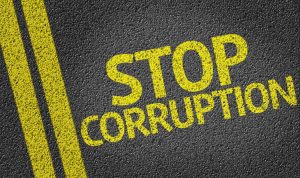
Changing regulations, ambiguous and contradictory directives, inadequate justification for restrictions and tenuous or non-existing links to the outcomes that the regulations are trying to achieve, created mistrust. This mistrust has been exacerbated by the emergence of evidence of pandemic-related corruption, and the authority of the state itself has been called into question as a result.
Borrowing from industry, trust and commitment promote strong relationships and collaborative action, through cooperation and compliance. Coercion, on the other hand, is counterproductive in this regard (Hausman and Johnston, 2010).
One cannot analyse the effectiveness of coercion and the force it employs without also thinking about power. The kind of power needed for coercion is the sort that the state possesses, and coercion is the forceful exercise of that power (Anderson, 2011). Power is anything that establishes and maintains the control and dominance of one person over another. Without power, imposing ones will on someone else is ineffective. Where there is a power imbalance between conflicting parties, the more powerful side will be expected to impose its will on the other (Kriesberg, 1988). Power can be used in a disciplined manner for moral ends with the necessary constitutional safeguards in place, or power can be unhindered by laws and used for the purpose of making something (appear) greater than is actually warranted by the facts (Morgenthau, 1985). Negative power manifests as making others do what they would not otherwise do. When positive power is applied, it manifests in cooperation, love, exchange, competence, altruism, and rewards (Rummel, 1991).
Coercion can be useful, but also harmful, and has been a longstanding political and ethical concern. State coercion effectively removes civil decision-making and replaces it with state or political decision-making. Coercion is considered the philosophical opposite of freedom.
Someone who is being coerced always has at least two options to choose from. The coercer can make one option more attractive (or less unattractive) than another by assigning differential force to each choice. However, just because something is illegal and can be punished, for example, doesn’t mean everyone will comply with the law. The coerced remains free to choose a response from at least the following options (Rummel, 1991):
- Comply with the demands of the coercer (e.g. wearing a mask in public)
- Run away from the coercive situation or coercer, to avoid coercion entirely (e.g. emigrate to a country where masks are not required)
- Counteract the coercive action with force, thereby attempting to thwart the coercer (e.g. sabotage the mask manufacturing plants)
- Don’t comply with the demands of the coercer and suffer the consequences (e.g. pay the fine for not wearing a mask in public)
At the very least, for coercion to be effective, the force or threat of force must be credible (i.e. likely to occur), and the benefits (i.e. gains) of compliance must outweigh the costs (i.e. losses) of non-compliance, from the perspective of the coerced. However, the unpredictability of the outcome of coercion stems from a number of psychological and behavioural factors in addition to credibility and perceived or expected costs and benefits. Failure to take all these factors into account results in failed coercion (Margalit, 2011; Rummel, 1991).
- People are generally loss averse. They dislike taking risks to improve gains but are likely to take risks to regain losses. Losses also have a greater impact than gains.
- In times of risk, uncertainty and danger, people do not decide rationally, and their behaviours produce outcomes that rational decision-makers do not expect.
- Some choices are made without knowing what the outcome of the choice will be because the results are influenced by undefined or uncertain events, turning any estimation of probability into a guess.
- The coerced’s attitudes, self-esteem, abilities, mood, physical and mental health, will, temperament and other personality traits, and perception of the threats and possible superordinate goals all play a role in the decision-making process.
What Next?
The pandemic had created the perfect storm, not only for opportunistic conspiracy theories in the face of uncertainty, but also for coercive action by the state, some of which is indefensible.
South Africans reacted to the restrictions by hatching bizarre conspiracy theories, with outright non-compliance, by launching peaceful and violent campaigns and protests on social media and in the streets. State interventions to manage the pandemic did very little to mitigate the expected psychological risks of the pandemic: escalating fear, stress, anxiety and depression (WHO, 2020).
Health is a state of balance, an equilibrium that we establish within ourselves and between us and our social and physical environment. For many years, the South African government has neglected to focus the necessary effort on removing diseases, diminishing risk factors that might lead to disease, promoting health by ensuring that it is given a higher priority, and addressing the (low) value placed on health by individuals and communities. Health is like playing the lottery: you cannot win if you don’t have a ticket.
The South African version of state coercion during lockdown has diverted attention and resources away from addressing important wounds that pre-date the pandemic. These include corruption and mismanagement of state assets; questionable statistics and pliable science; under-resourced and malfunctioning health and social services; homelessness, forceful evictions and demolitions; poverty, hunger and unemployment; failing and non-existent infrastructure, and water, sanitation, and electricity supply; archaic, unequal education, training and learning opportunities; economic carnage and failing businesses; gender-based violence and police brutality; crime and the devastating effects of corruption. These old wounds are gaping wider and wider, festering as law and order becomes more draconian, more forceful and coercive, and the people of South Africa become increasingly defiant.
I detest violence, whether overt or covert, forceful or subtle, deliberate and planned or unintentional and on impulse, physical or otherwise, justified or not. Throw in an innate curiosity and a generous dollop of passion for justice and restitution, and you have the makings of a potentially over-zealous activist, restrained only by intermittent exhaustion, an abhorrence of violence, and an unwavering resolve to create calm and see balance in the world.
This leaves me with one last question: if conspiracy theories, conspiracies and state coercion are the new normal, how do we deal with it, cope, survive, thrive, during and after this and future pandemics?
I don’t know the answer yet.


I would love to hear your thoughts regarding the answer….
Great article and a necessary conversation. Would love to engage further as the narrative unfolds. Keep in touch….
Great article – fair comment on all levels .. I wish I knew the answer to your question .
Not only a very insightful, balanced and well researched piece, but also beautifully written. Very interested in hearing some more of your views.
Some feedback regarding ‘the answer’, from various platforms:
– Build community and civil institutions/civil liberties groups
– Moral responsibility and authority
– Address the global leadership crisis
– Use examples of good or successful state coercion during the pandemic to model a new (or improve existing) type of leadership